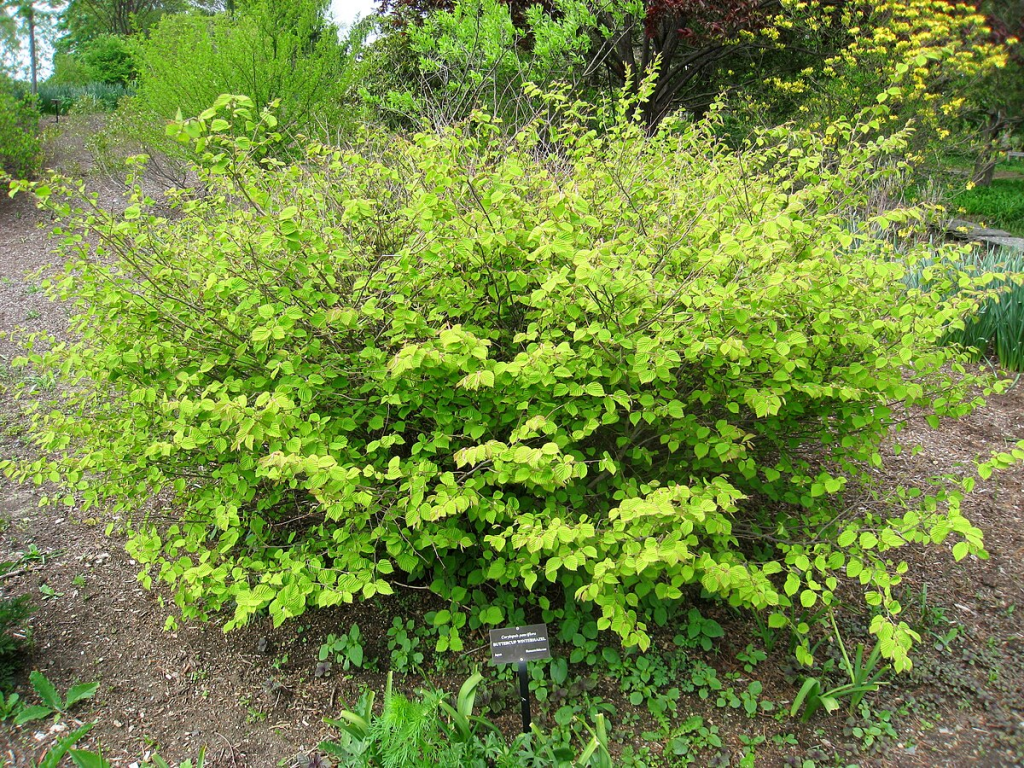
Native to Japan and Taiwan, this deciduous shrub is a member of the witch hazel family, Hamamelidaceae, that also includes fothergill and loropetalum. It grows 4-6′ tall and spreads to form a dense mound. The leaves emerge bronze before turning green and then yellow-green to gold in the fall. They are ovate, 1.5-3″ long, toothed, and have prominent sunken veins that are hairy on the underside. Fragrant, primrose-yellow flowers appear on drooping racemes in early spring, before the leaves emerge. Each raceme is 1-2″ long and has 2-3 flowers with 4-5 petals and red stamens. The fruit is a woody, 2-valved capsule with 2 small glossy black seeds. Buttercup winter hazel is an excellent choice for a mixed border as well as woodland, and fragrance gardens. The genus name, Corylopsis, is derived from the Greek words korylos which means hazel and opsis which means like or resemblance and refers to the fact that the leaves are similar to those of hazel plants. The specific epithet, pauciflora, comes from the Latin words, paucus meaning few, and flos, meaning flower, and refers to the small number of flowers on each raceme. Photo Credit Daderot, Wikimedia Commons

Type: Flowering deciduous shrub
Outstanding Feature: Flowers
Form: Mounding
Growth Rate: Slow
Bloom: Racemes 1-2″ long with 2-3 fragrant yellow flowers in early spring
Size: 4-6′ H x 4-8′ W
Light: Full sun to part shade; afternoon shade in hot climates
Soil: Average, consistently moist, well-drained, acidic
Hardiness: Zones 5-8
Care: Prune immediately after flowering if needed; protect from wind
Pests and Diseases: None of significance
Propagation: Seed, semi-hardwood cuttings
Outstanding Selections: None available
Photo Credit: Wikipedia